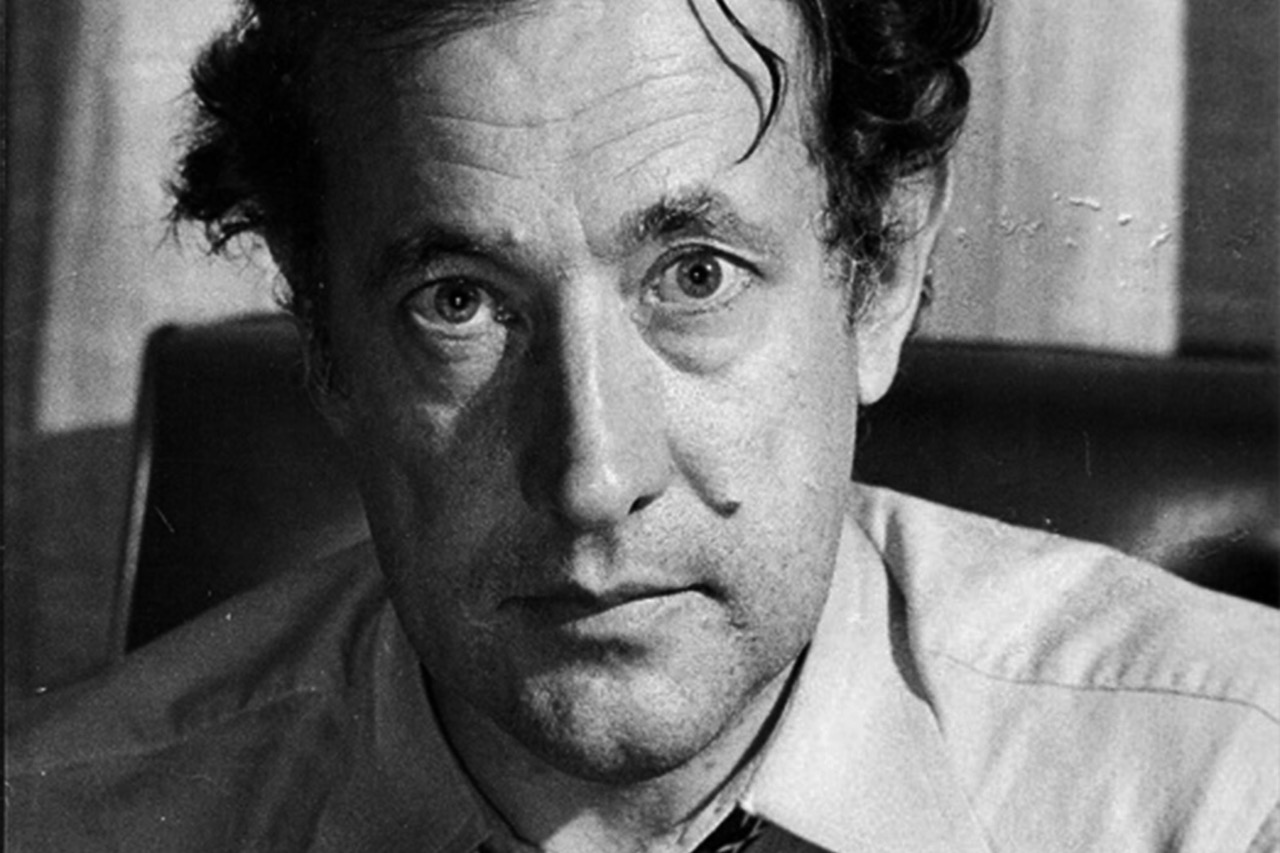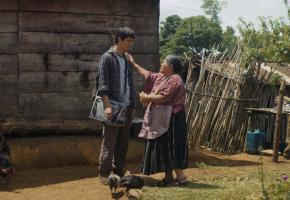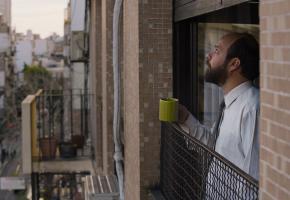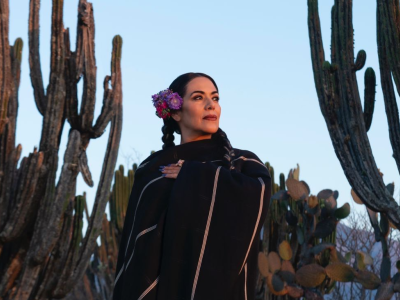This fascinating feature-length documentary, was researched, written and directed by Jayson McNamara, an Australian journalist, who himself worked for the Argentine English-language newspaper The Buenos Aires Herald between 2013 and 2014. It was there that he began to learn about the bravery of one editor Bob Cox, who, despite the dangers, carried out an extraordinary role in divulging highly sensitive information to the readers and the world during the notorious ‘Dirty War’ of the Military Junta (1976-1983).
In his research, McNamara built up an impressive archive for the project from all over the world, having found news reports and videos from as far afield as Sweden and Germany. He is acutely aware of the importance of revealing what he had learnt: -
“Also… to see the reaction in Argentina, because lot of that material had not been seen before, it’s been hidden away in the archives and only in the last couple of years, [has been available online] in Europe & North America, so it was exciting to bring that material to Argentina and bring something new to the table.”
Bob Cox's reports were all the more significant, because the Military Junta had issued a decree to forbid the publishing of any news on attacks, guerrilla actions, kidnappings or bodies found on the streets, without official ‘confirmation’.
This led to ‘fake news’, where news was altered and sanitized. Bob Cox’s Argentine wife, Maud talks about one ‘permitted’ story that was released: The official version being that 6 guerrillas were shot when their hideout was stormed in a gun battle. Later, a witness revealed that 6 persons had been lined up against a wall and shot without trial nor jury.
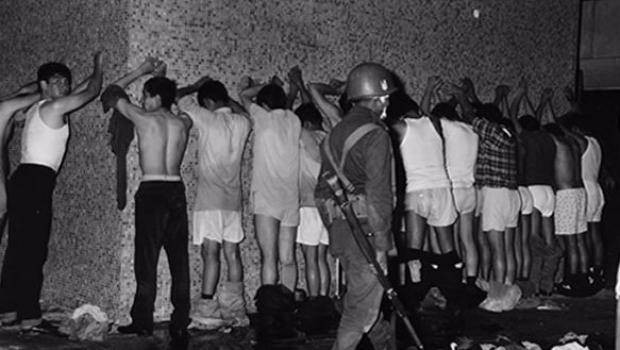 Detained youths after the coup
Detained youths after the coup
Bob Cox was born in England of genuine London stock as his father, having been born within the sound of the Bow Bells, could be considered a true cockney. Even so, they lived in Ealing in West London, where the young Bob was brought up during the worst of the bombing raids of the Second World War. Being kids, they considered it fun to play in the rubble of the bomb sites, learning fast not to pick up German booby-trap bombs.
His ’cockney’ dad had been a ‘messenger’ in the First World War, riding a ‘white’ horse to be easily identified by both sides as a non- combatant. He often spoke to his son about his dream of going to Argentina. So it was that in 1959, his son, Bob, was to fulfil that dream, going out to Buenos Aires instead, having been hired as a copy editor to the BUENOS AIRES HERALD, the only British community newspaper in English in the country.
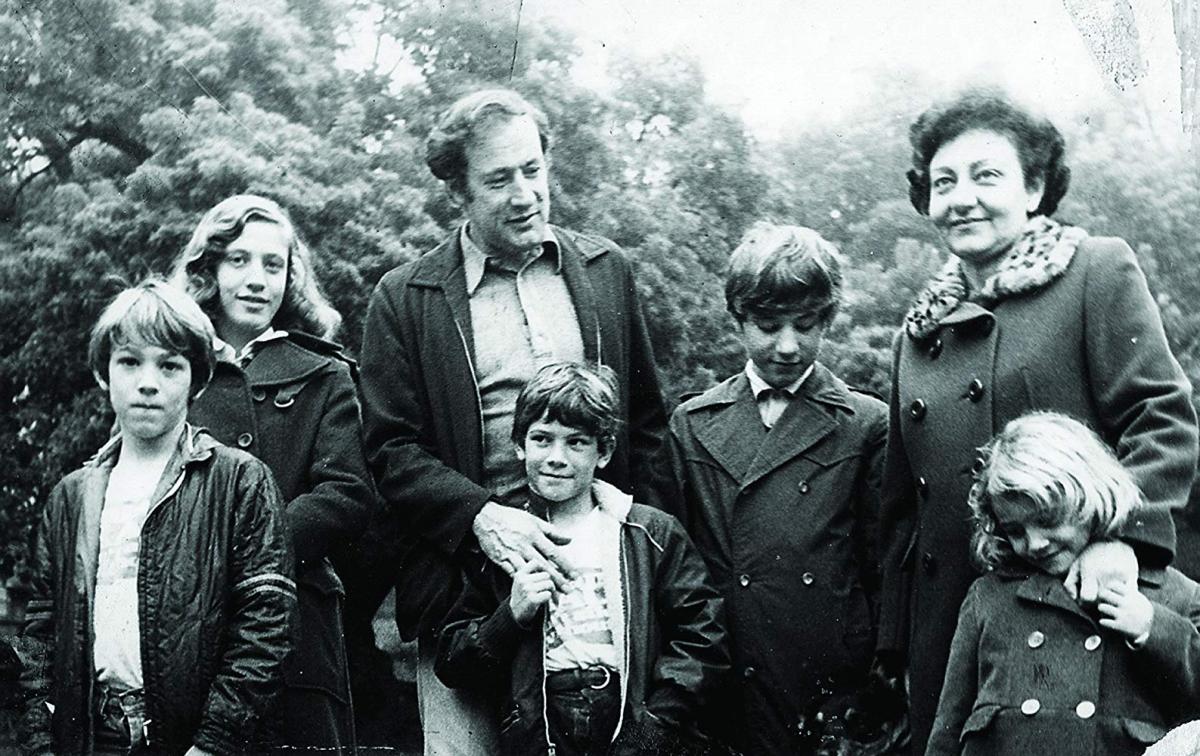 Bob Cox, his wife Maud and their children in Buenos Aires.
Bob Cox, his wife Maud and their children in Buenos Aires.
His influence at the paper was immediately noticeable. Cox encouraged them to change the design and reach, and it progressed from being a small community paper to a respected national daily. By the time the Military Junta took control in March 1976, the Herald was a first-rate newspaper dealing first & foremost in International affairs, as foreign- language newspapers did not traditionally comment on local issues. These were left to the large national papers like LA NACION and LA PRENSA.
That was to change.
Bob Cox is a remarkably humble man. It is not always easy to see the steel core within, as the Director McNamara explains: -
“He is so gentle that it’s mind-boggling, when you think that he faced up to the horrible, horrible people with such courage and guts! You don’t necessarily think, when you meet him that he would have the personality traits to have done that, but I think it was something that was born from deep within him and had a lot to do with his story of growing up during the Blitz… Aside from the fact that it added a little bit of colour to his portrayal, I do think that it’s very relevant. Having grown up as a six, or seven-year old during the Blitz, being constantly aware of this external enemy attacking your society and your values, has a lot to do with his story in Argentina and his resilience. I think that perhaps, it set Bob up, in that he was able to recognize what was going on and he was able to make good decisions about what to do.”
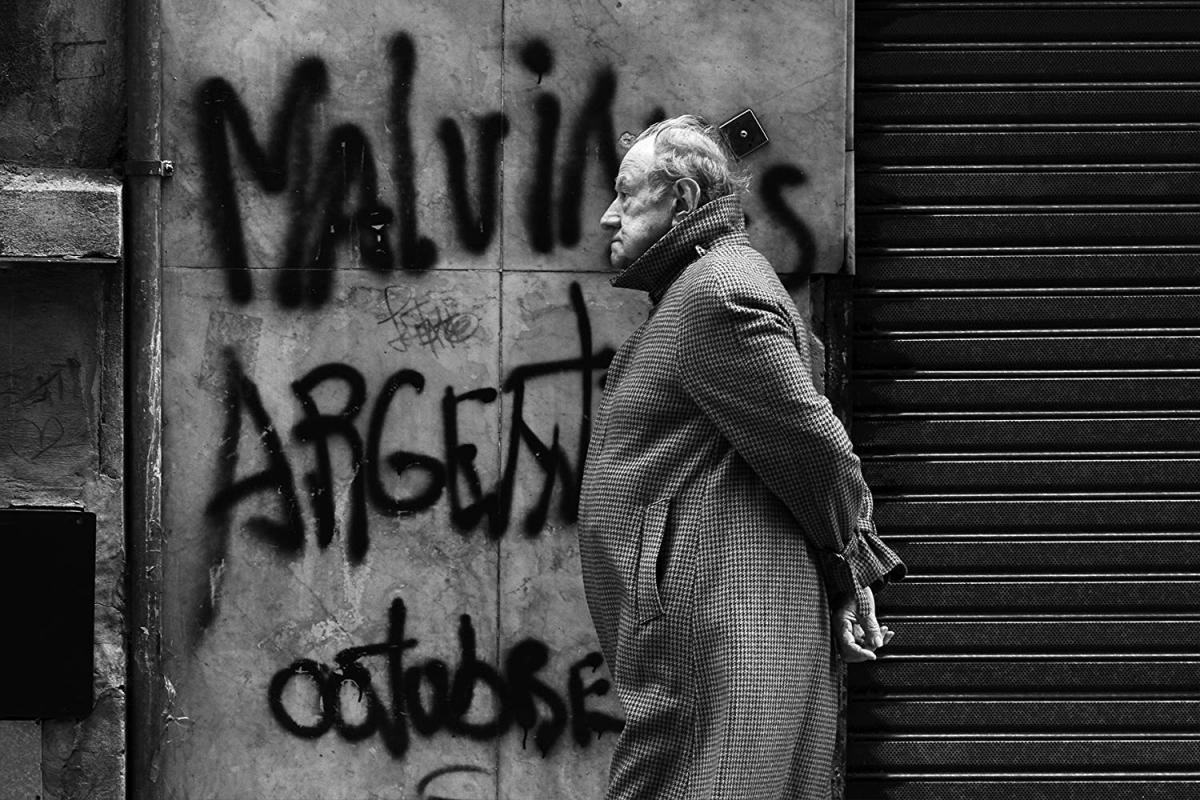 Bob Cox recently in Buenos Aires
Bob Cox recently in Buenos Aires
It is shocking to think that, at first, some people welcomed the Military coup, thinking it solve to the tumultuous divisions and violence of years that preceded it.
The return of Juan Peron (1973) and the subsequent presidency of Isabel Peron, were marred by an increase bombings and kidnappings, largely perpetrated by revolutionary groups like the ERP (the People’s Revolutionary Army) and the Montoneros on one side and the extra-judicial killings by the Triple-A, (Argentine Anti-Communist Alliance) a far-right death squad, on the other.
Like all over Latin America, executives and relatives of rich families were kidnapped and often, after a ransom is paid, released unharmed. But after 1973, people who were 'disappeared' by the state never returned.
Perón’s personal secretary and Minister for Social Welfare José López Rega - a devotee of occultism and a self-styled fortune- teller exerting undue influence on Isabel Perón and her husband - ran the far- right Triple-A death squad, created in 1973, to eliminate the Peronist ‘left’, as well as a wide-range of government opponents.
It was no mistake that López Rega and his chief operating officer Rodolfo Almirón (later jailed in Spain for ‘Crimes against Humanity’) were present at the ‘Ezeiza Massacre’, in June 1973. Where, from Perón’s reception platform erected near the airfield, before he landed, camouflaged snipers fired towards the 3.5 million people who had gathered for the dictator’s return. They targeted the very people who, groomed by Perón and followers from Spain, had relentlessly campaigned for his return to power. These were mostly left- wingers and communist groups, hated by the fascist elements in the party.
There never was an official investigation, so figures of the casualties are believed to be untrue. It is thought that thousands perished and were wounded.
Following her husband's death in office in 1974, Isabel served as president of Argentina from 1 July 1974 to 24 March 1976. During this time, López Rega held the de facto power, vetting all her policies. As a result, the number of assassinations carried out by the Triple-A continued unabated, as did the atrocities being committed by left- wing extremists, who, not to be undone, also murdered the US Consul John Egan, journalists and business executives from Fiat and Esso, and were even bold enough to attack an army barracks.
Things were totally out of control and no one felt safe. People were desperate for change.
So, when the Military coup took place and Lieutenant General Jorge Rafael Videla was sworn in as President everyone was delighted. Videla was seen as a saviour and welcomed. In one of his first speeches he said: -
“Terror is designed… to reduce decent people… to an easily led herd, to tear away faith in the mere possibility of law and order and the ability of governments to stop it…", he promised to fight…"anything that threatens human life and human dignity… from right or left-wing terrorism.”
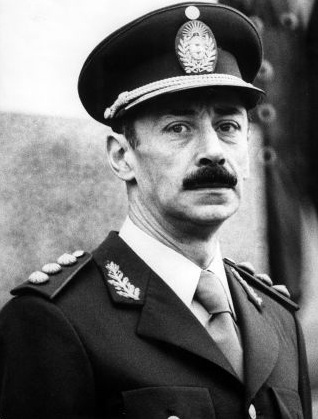
Initially, even Bob Cox and the Buenbos Aires Herald also welcomed the coup as an end to the relentless terror and a return to normality.
Over the years Argentina has had many coups but they were usually bloodless. People would joke about them: “Whose in power today?… The Blues or the Reds?… Friends, doing their Military service could find themselves on opposing sides and they would chat over the rapidly-constructed army barriers in the street, sharing a coffee, before returning to barracks saying it had been “impossible to continue…road blocked”, with not a shot fired.It was said that there were ‘more deaths at a Mexican wedding’ than in an average Argentine coup.
What had changed?
By 1976, the Chilean government of Allende had been taken over by a Military coup led by General Augusto Pinochet, the Military government in Brazil was still in place, and above all graduates from the SOA (US Army School of the Americas in Panama) that taught violent anti-insurgency techniques, were being used as ‘advisors’ by a number of South American countries. Plan Condor was also in place. This was a covert operation, an USA (CIA) backed campaign of political repression and state terror involving intelligence operations, including the assassination of opponents, officially implemented in 1975 by the the right- wing dictatorships of the Southern Cone of South America, including Brazil.
When news starting filtering into THE BUENOS AIRES HERALD about the ‘state terrorism’ being perpetrated, it was not initially believed. It seems impossible that the government could be behind the disappearances. There had been so many kidnappings during the Peronist era, with bodies being thrown at the foot of the Obelisk on the wide 9 de Julio Avenue, that at first it was impossible to ascertain who could have been responsible. It was hard to digest the possibility that the Military Junta could be behind it.
Bob Cox: “We discovered that the violence was the same or worse [ than it had been before the coup]. People began to flood to the newspaper to report on events… and we had contact with foreign press agencies. When a group of priests was murdered, outside the country, it was reported… correctly, that it was the act of extreme-right groups [AAA] but here, the [local] newspapers reported it was the guerrillas, (the Montoneros).
Desperate for news, huge numbers of mothers and grandmothers began to search for their missing children, as doors were ruthlessly closed on them: -
“There must be a reason… they must have done something… don’t get involved…”
The Junta had not counted on the power of a mother’s rage. Many of those taken had been involved with the insurgency, but that did not excuse the lack of transparency or even a trial, as the organization of the ‘Mothers of Plaza de Mayo’ took shape, one mother explains: -
They were “… chasing their dreams…they were idealistic … they were fighting for the liberation of the people and they thought they knew it all. They even thought they could fight an army, but they were wrong.”
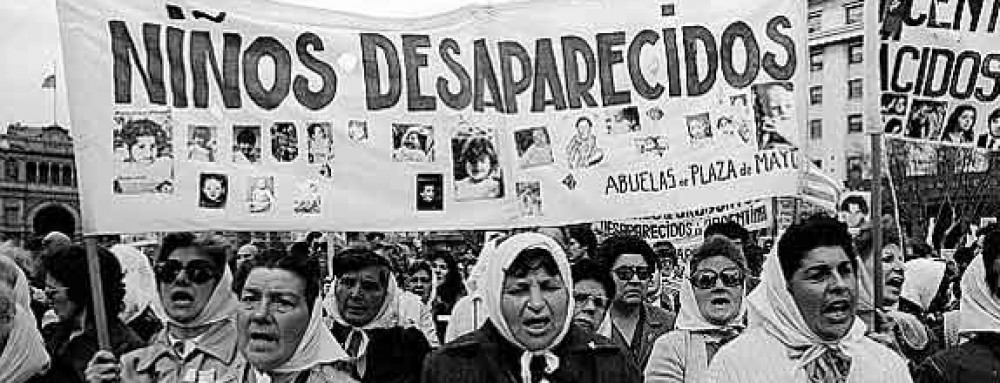 Mothers of Plaza de Mayo demostrating.
Mothers of Plaza de Mayo demostrating.
Although the Mothers had initially accused the Herald of being elitist, now they needed help. Bob Cox, was the first editor to stop and listen to their pleas, this moved them deeply. There was an unusual dichotomy: those on the left saw Bob Cox and the Herald as super right- wing, while those on the right saw him as a communist.
All the same, despite their initial misgivings, the mothers had to recognize that THE BUENOS AIRES HERALD was the first media outlet in Argentina to report that the government was behind the kidnapping of their children and their disappearances. Bob Cox personally attended public meetings of the Mothers of Plaza de Mayo and then, with his wife, Maud, personally investigated and confirmed reports that the crematorium in Chacarita Cemetery was being used to incinerate the bodies at night.
Being in the English language, Cox’s reports from 1976 to 1979 were more accessible to the foreign press and the information in his hundreds of articles about the military’s crimes, thus filtered out to the outside world. During all that time Cox was actively supported by the majority shareholder in the paper, Peter Manigault, (of The Evening Post Publishing Company, now Evening Post Industries) based in Charleston, South Carolina, where they also ran ‘The Post and Courier’, without whom it might not have been possible to continue.
But Cox’s work would come at a cost. In 1977 he was detained, but thanks to strong international pressure (including that from Jimmy Carter) he was released.
“He is alive…”, they said, “for now.”
The Junta went on to murder dozens of journalists in Argentina during their eight-year reign.
Finally, years of threats and intimidation against Cox culminated in a sinister threat sent to his 10-year-old son in December, 1979, which finally led him to leave the country for the USA with his family, where he became the editor of the “Post and Courier”.
In 1985, when the first trials of the Junta were opened, he returned as a witness, but he was never to live in Argentina again. Many horrors were revealed to the public for the first time. Subsequent presidents were to give an amnesty to the convicted, but thanks to the Kirchners, the trials were eventually re-opened and the guilty are now back in jail.
Bob Cox was given an award “In the name of the journalists that disappeared”, and he was designated “An Illustrious citizen of the Autonomous City of Buenos Aires” in 2010 in recognition of his humanitarian work. Despite these accolades Bob Cox has always lamented he had had to leave, feeling profoundly that he was “… betraying those he wanted to help”. He was to say: -
“I did not do enough...I should have done more!”
Yet whole families were saved and are now alive, thanks to his reports. He only found out, decades later, what had happened to many people whose lives he had saved. Cox, as well as his wife and one of his sons, have written books on the traumatic period that continues to affect the country: -
Jayson McNamara: -
“The damage that the dictatorship has done will continue to manifest in Argentine society for many years to come, as Maud Cox, Bob’s wife, said: ‘It will take that generation to pass away before we can start talking about a new era’. It’s not possible for a society that has dealt with such criminality on such a broad scale to recover quickly. There’s a lot of pain, fear and mistrust and lots of psychological trauma that expresses itself in many strange ways. It’s hard to say, but I think that it will take time.”
This film is an important and riveting document that reveals the role played by Bob Cox and THE BUENOS AIRES HERALD during a difficult period in the history of Argentina. With moving interviews with some Mothers of Plaza de Mayo, many of whom are now well into their 80s and journalists (like Andrew Graham-Yooll and Uki Goñi), McNamara carefully combined these with a mass of unseen archival material, to piece together aspects of the story that had become lost in the haze of time.
Jayson McNamara is currently working on a new project that will focus on one of the “Mothers of Plaza de Mayo”. THE BUENOS AIRES HERALD has been reborn after closure as THE BUENOS AIRES TIMES.
‘Messenger on a White Horse’ is available on Amazon UK and in the USA in an edited version: The link is: http://amzn.eu/d/fdkKQ0k
CREDITS:
Director Jayson McNamara
Writer Jayson McNamara
DOP Santiago Carrica , Agustina González Bonorino, Ernesto Doldán, Francisco Villa
Archival restoration Laura Viviano
Original music Paco Cabral & Matías Tozzola
Production Company Cabezón Films


